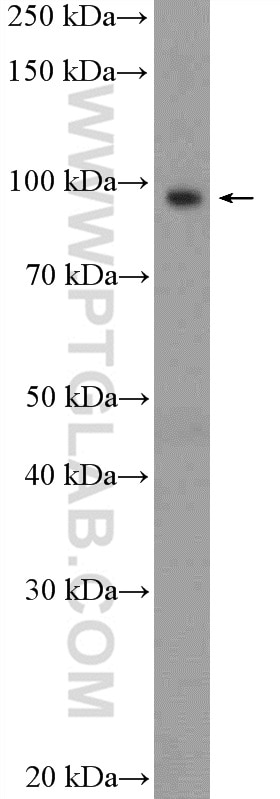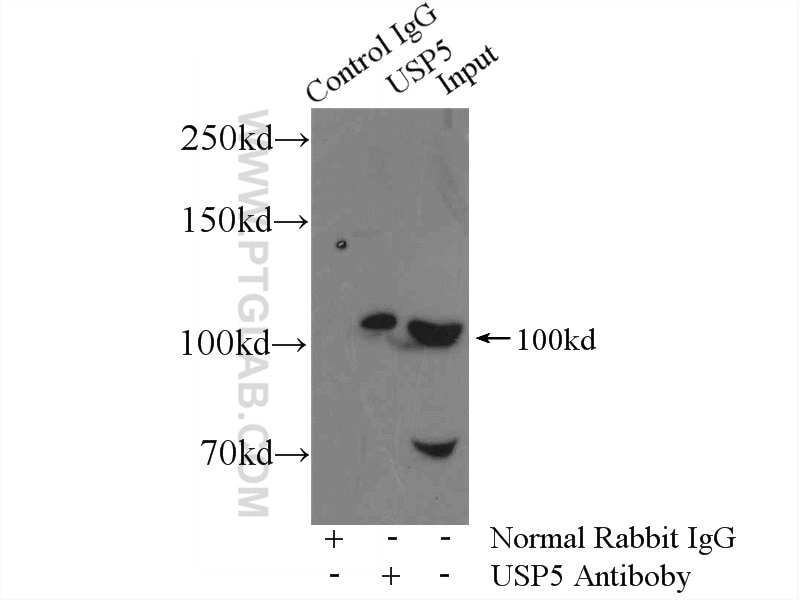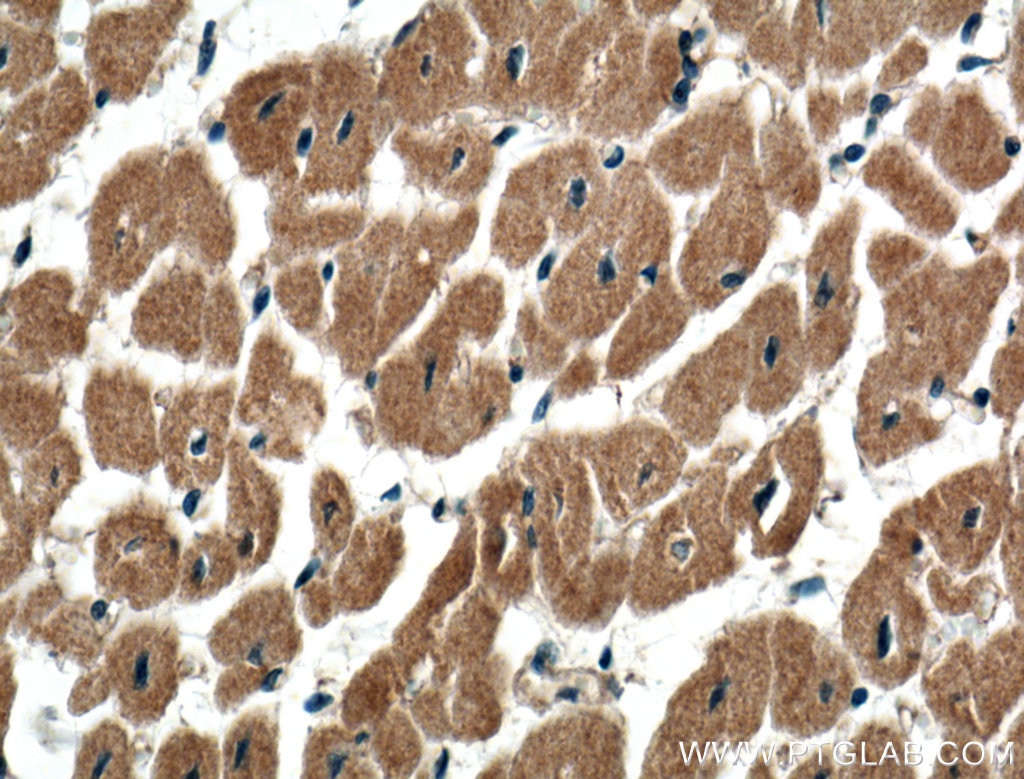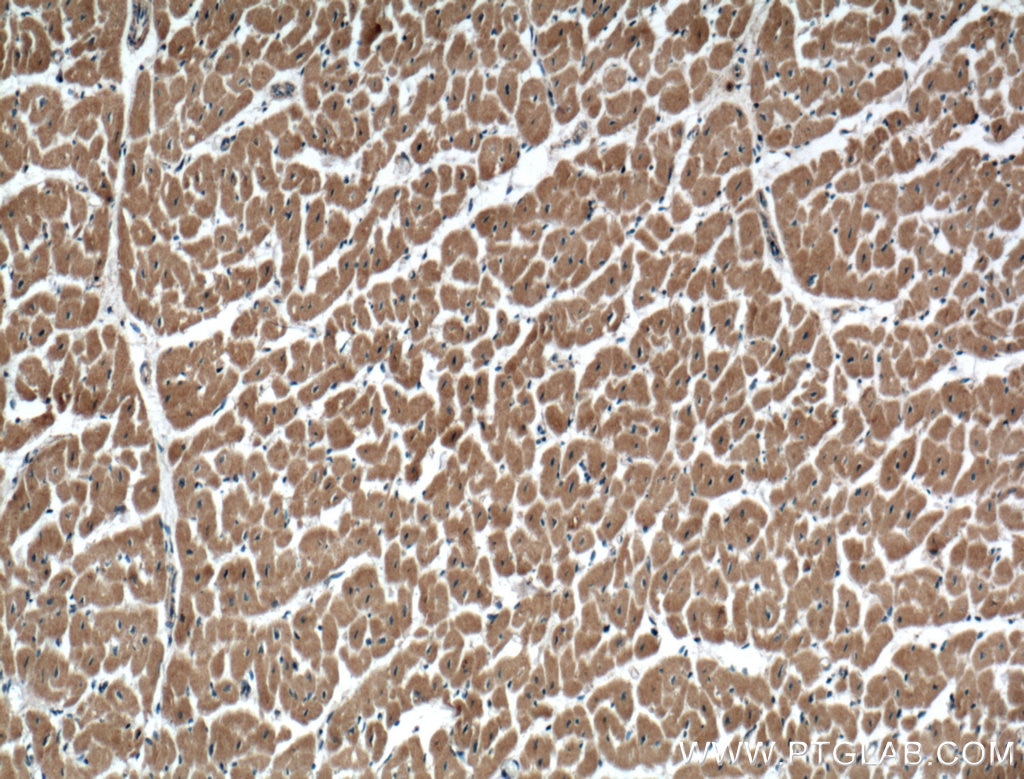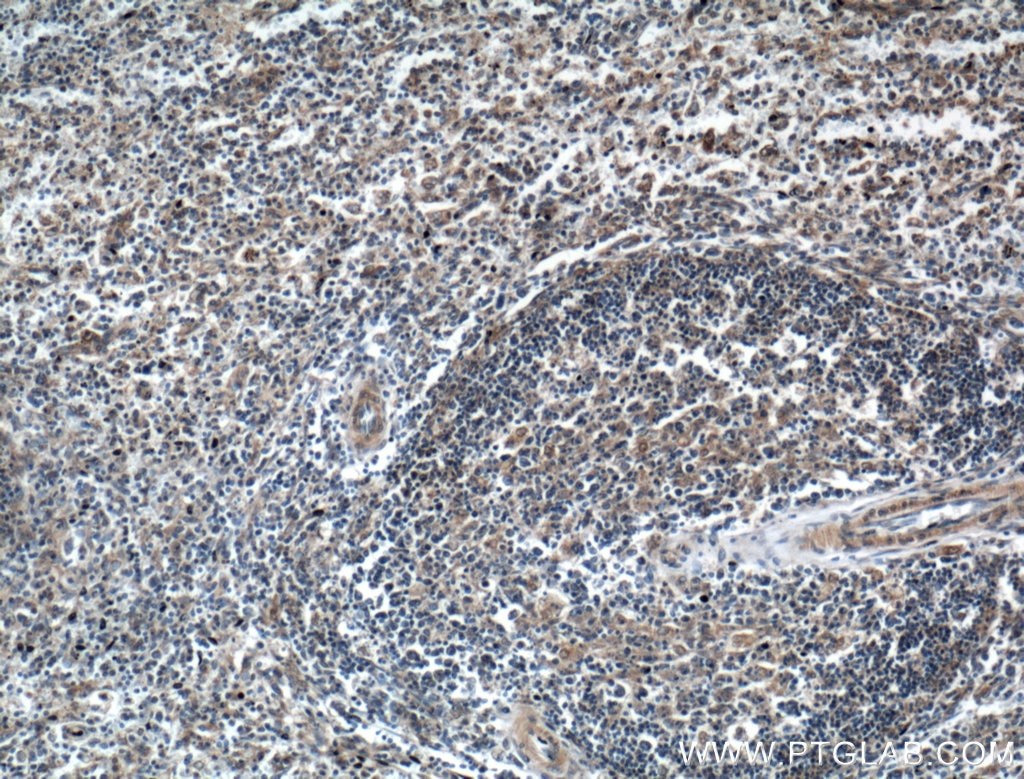- Featured Product
- KD/KO Validated
USP5 Polyklonaler Antikörper
USP5 Polyklonal Antikörper für WB, IP, IHC, ELISA
Wirt / Isotyp
Kaninchen / IgG
Getestete Reaktivität
human, Maus, Ratte und mehr (1)
Anwendung
WB, IHC, IF, IP, CoIP, ELISA
Konjugation
Unkonjugiert
Kat-Nr. : 10473-1-AP
Synonyme
Galerie der Validierungsdaten
Geprüfte Anwendungen
| Erfolgreiche Detektion in WB | A549-Zellen, DU 145-Zellen, humanes Herzgewebe, humanes Kolongewebe, Maushirngewebe, U2OS-Zellen |
| Erfolgreiche IP | Maushirngewebe |
| Erfolgreiche Detektion in IHC | humanes Herzgewebe, humanes Milzgewebe Hinweis: Antigendemaskierung mit TE-Puffer pH 9,0 empfohlen. (*) Wahlweise kann die Antigendemaskierung auch mit Citratpuffer pH 6,0 erfolgen. |
Empfohlene Verdünnung
| Anwendung | Verdünnung |
|---|---|
| Western Blot (WB) | WB : 1:2000-1:12000 |
| Immunpräzipitation (IP) | IP : 0.5-4.0 ug for 1.0-3.0 mg of total protein lysate |
| Immunhistochemie (IHC) | IHC : 1:100-1:400 |
| It is recommended that this reagent should be titrated in each testing system to obtain optimal results. | |
| Sample-dependent, check data in validation data gallery | |
Veröffentlichte Anwendungen
| KD/KO | See 15 publications below |
| WB | See 35 publications below |
| IHC | See 6 publications below |
| IF | See 4 publications below |
| IP | See 5 publications below |
| ELISA | See 2 publications below |
| CoIP | See 3 publications below |
Produktinformation
10473-1-AP bindet in WB, IHC, IF, IP, CoIP, ELISA USP5 und zeigt Reaktivität mit human, Maus, Ratten
| Getestete Reaktivität | human, Maus, Ratte |
| In Publikationen genannte Reaktivität | human, Hausschwein, Maus, Ratte |
| Wirt / Isotyp | Kaninchen / IgG |
| Klonalität | Polyklonal |
| Typ | Antikörper |
| Immunogen | USP5 fusion protein Ag0770 |
| Vollständiger Name | ubiquitin specific peptidase 5 (isopeptidase T) |
| Berechnetes Molekulargewicht | 96 kDa |
| Beobachtetes Molekulargewicht | 95-105 kDa |
| GenBank-Zugangsnummer | BC004889 |
| Gene symbol | USP5 |
| Gene ID (NCBI) | 8078 |
| Konjugation | Unkonjugiert |
| Form | Liquid |
| Reinigungsmethode | Antigen-Affinitätsreinigung |
| Lagerungspuffer | PBS mit 0.02% Natriumazid und 50% Glycerin pH 7.3. |
| Lagerungsbedingungen | Bei -20°C lagern. Nach dem Versand ein Jahr lang stabil Aliquotieren ist bei -20oC Lagerung nicht notwendig. 20ul Größen enthalten 0,1% BSA. |
Hintergrundinformationen
USP5, also named as ISOT, belongs to the peptidase C19 family. Knock-down of USP5 causes the accumulation of TP53/p53 and an increase in TP53/p53 transcriptional activity because the unanchored polyubiquitin that accumulates is able to compete with ubiquitinated TP53/p53 but not with MDM2 for proteasomal recognition. USP5 is a potential target for p53 activating therapeutic agents for the treatment of cancer(PMID: 19098288). It is a novel proteasome associated protein(PMID: 19182904). USP5 cleaves linear and branched multiubiquitin polymers with a marked preference for branched polymers. USP5 has 2 isoforms with the molecular mass of 96 kDa and 93 kDa.
Protokolle
| Produktspezifische Protokolle | |
|---|---|
| WB protocol for USP5 antibody 10473-1-AP | Protokoll herunterladen |
| IHC protocol for USP5 antibody 10473-1-AP | Protokoll herunterladen |
| IP protocol for USP5 antibody 10473-1-AP | Protokoll herunterladen |
| Standard-Protokolle | |
|---|---|
| Klicken Sie hier, um unsere Standardprotokolle anzuzeigen |
Publikationen
| Species | Application | Title |
|---|---|---|
Nat Commun STREAMING-tag system reveals spatiotemporal relationships between transcriptional regulatory factors and transcriptional activity | ||
Blood The ubiquitin ligase HERC4 mediates c-Maf ubiquitination and delays the growth of multiple myeloma xenografts in nude mice. | ||
Theranostics Ubiquitin specific peptidase 5 regulates colorectal cancer cell growth by stabilizing Tu translation elongation factor.
| ||
Clin Transl Med MAFG-AS1 promotes tumor progression via regulation of the HuR/PTBP1 axis in bladder urothelial carcinoma.
| ||
Acta Pharmacol Sin Mebendazole elicits potent antimyeloma activity by inhibiting the USP5/c-Maf axis. | ||
Sci Signal Selective inhibition of CaV3.2 channels reverses hyperexcitability of peripheral nociceptors and alleviates postsurgical pain. |








